This year marks the 25th anniversary of Kunihiko Ikuhara’s groundbreaking surreal magical girl anime, Revolutionary Girl Utena. It tells the story of Utena Tenjou, a pink-haired teenage girl who aspires to be a prince and attends a mysterious academy. There, she finds herself unwittingly participating in a series of duels for a young woman named Anthy Himemiya, aka The Rose Bride.
The series (and accompanying anime movie) is notable for its psychological symbolism, dark character development, and LGBTQ characters. Not only was it inspired by classic anime and other influences like shadow puppetry and fairy tales, it has gone on to influence many anime that came after it. Check out these anime series influenced by Revolutionary Girl Utena.
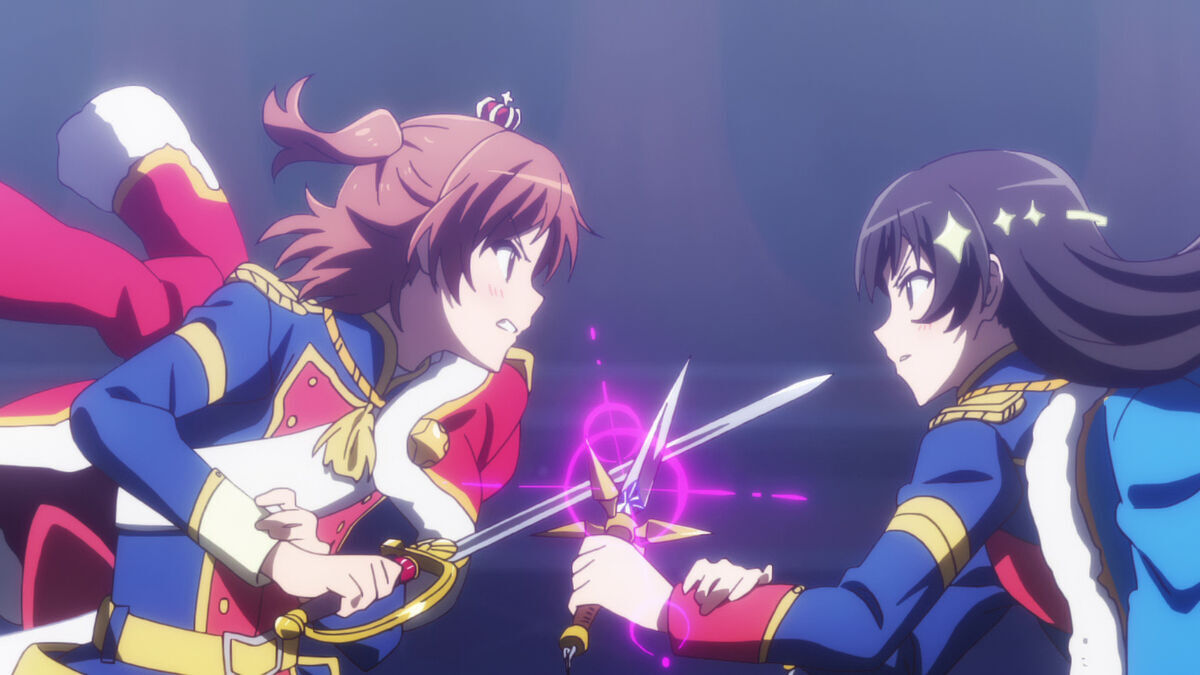
Revue Starlight tells the story of a group of girls at an all-girl theater school. During the day, each girl practices for the upcoming presentation of a fairy tale play known as Starlight. At night, certain chosen girls duel each other in hand-to-hand combat in order to become the best “Stage Girl” ever. One girl in particular, Karen Aijo, unwittingly decides to participate in the duels after the return of her old friend Hikari Kagura. Once best friends and now rivals, Hikari and Karen repeatedly challenge each other as they strive toward their respective dreams.
Since Revue Starlight’s director Tomohiro Furukawa apprenticed under Utena’s director Kunihiko Ikuhara, it is no wonder that this anime’s premise expands on certain elements of Utena’s. One of the most visually striking parallels is that of Utena’s duels and Revue Starlight’s. While Utena prominently featured swordplay, Revue Starlight has each girl using a different weapon and singing a musical number that embodies their inner desires. A shared element of Utena’s and Revue Starlight’s duels is how various background objects symbolize each character’s personality.
Another feature that Utena and Revue Starlight have in common is the devotion between the main leads. For the titular Utena and the Rose Bride Anthy Himemiya, their relationship is complicated because of the insecurities and secrets they are keeping from each other. Eventually, the two work through them and inspire the best in each other in the anime series as well as the movie Adolescence of Utena. Revue Starlight’s main duo, Karen and Hikari, experience something similar once Karen literally drops into the duels. Hikari initially tries to discourage Karen from participating and push her away, but Karen’s determination allows Hikari’s personal dream to be seen in a new light.
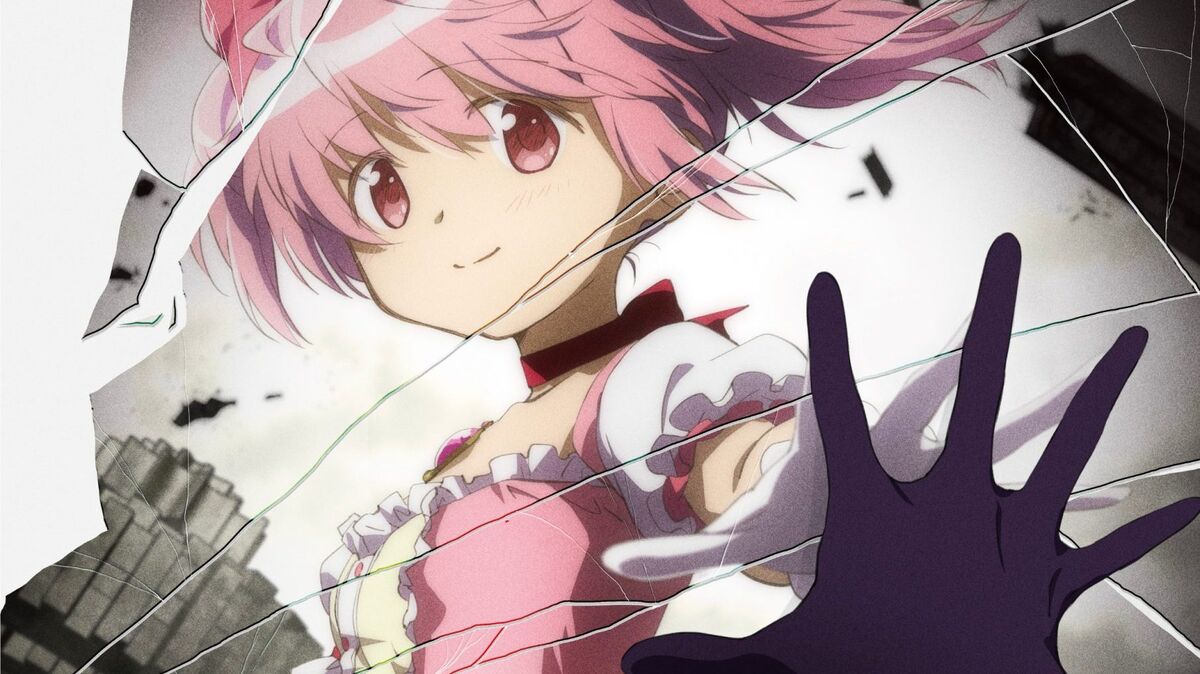
Puella Magi Madoka Magica is about a group of middle school girls who are approached by an anthropomorphic creature named Kyubey. In exchange for granting a wish, Kyubey will turn the girls into magical girls who fight creatures known as witches. However, the girls soon discover that their wishes and newfound power come at a horrible price. With the help of the series’ protagonist Madoka and a mysterious magical girl named Homura, the girls try to undo the damage caused by their abilities.
Besides Utena, Madoka Magica might just be one of the darkest magical girl anime series out there. One reason for this is that both shows feature wish fulfillment gone wrong in horrible or tragic ways. Utena’s desire to be a prince negatively impacts Anthy, while Madoka and the other characters unintentionally hurt others or themselves by taking up the mantle of a magical girl to make their wishes come true.
In addition, there are parallels between the dynamic of Utena/Anthy and Madoka/Homura. Utena and Madoka are idealistic and hopeful about their roles, while Anthy and Homura are pessimistic and resigned. One of them also desires to save the other from their tragic fates through any means, including sacrificing themselves.
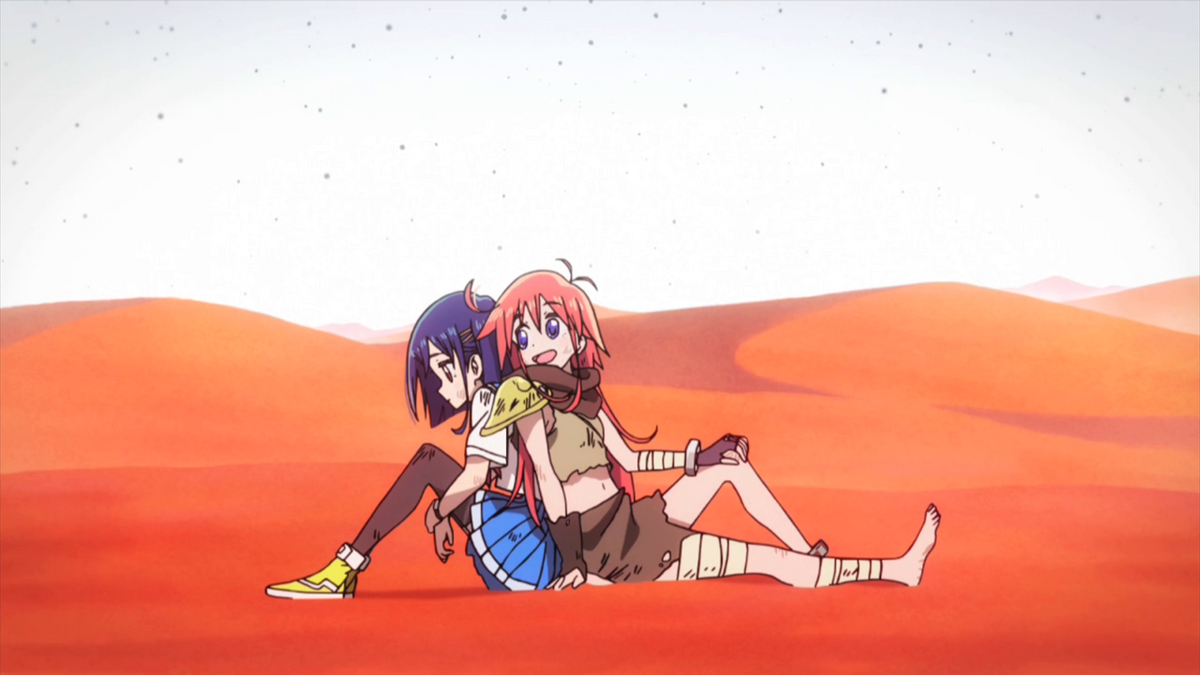
Flip Flappers tells the story of two girls, the energetic Papika and the morose Cocona. While pondering over her future, Cocona is dragged into an alternate reality called Pure Illusion by Papika and meets the organization known as Flip Flap. From there, both girls are tasked with fighting monsters and retrieving fragments that are said to grant wishes.
Both Utena and Flip Flappers feature surreal settings that metaphorically represent the inner psych of the main characters. For Utena, this is demonstrated in not only the school setting, but also a castle that appears whenever Utena has a duel, both of which represent how Utena and Anthy are taught by various people to aspire to unrealistic expectations and stifling roles as girls. In Flip Flappers, Pure Illusion lives up to its name by taking the form of different dream worlds that try to trap Cocona and Papika. For the former, some of these dream worlds are a tempting lure to invite an indecisive Cocona into avoiding her problems.
Another feature that Utena and Flip Flappers share is the romantic tension between its female leads. While this is only hinted at in the Utena anime series, the anime movie Adolescence of Utena lets Utena and Anthy fall in love with each other. In one of the most visually stunning scenes from the film, Utena and Anthy dance in a rose garden with a starry sky reflected beneath them. Meanwhile, Flip Flappers has Papika fall in love with Cocona at first sight, while Cocona gradually develops romantic feelings for Papika. When both of them finally admit their feelings, it results in a literal transformation that embodies both characters’ self-actualization.
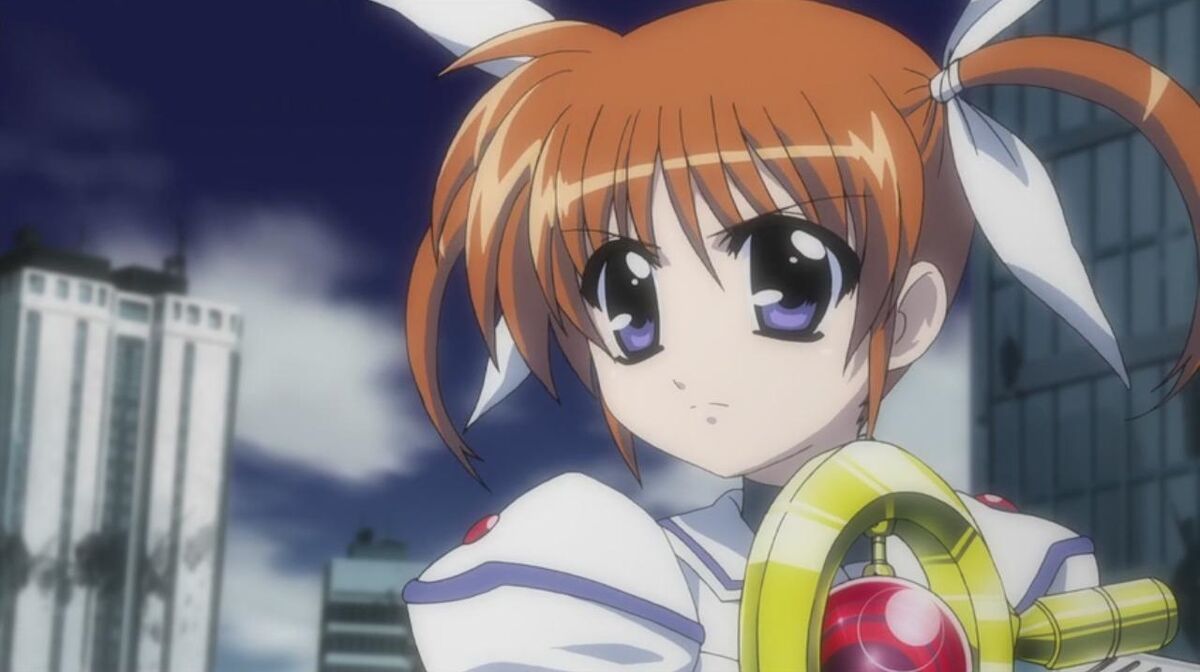
The first series in the Magical Girl Lyrical Nanoha franchise revolves around a nine-year-old girl named Nanoha Takamachi. After rescuing an injured “ferret” named Yuuno, she is tasked with retrieving twelve magical artifacts Jewel Seeds using a staff known as Raising Heart. However, a rival magical girl, Fate Testarossa, also seeks the Jewel Seeds for her own reasons. As a result, Nanoha and Fate frequently clash until a startling secret about the Jewel Seeds and Fate is revealed.
Both Utena and Nanoha feature a character trope known as the “dark magical girl,” a magical girl who has a troubled past. These characters sometimes exist as a foil and rival to the magical girl heroine, because the dark magical girl lacks the friendship or familial love that the heroine has and must combat them for their own agenda. In Utena, Anthy Himemiya is the dark magical girl to Utena’s magical girl heroine, while Nanoha features Fate in the dark magical girl role.
Anthy and Fate are dark magical girls for similar reasons; both are friendless and have abusive family members. In order to try and escape their respective traumas, they eventually clash with the magical girl heroine because they feel they have no other alternatives. It isn’t until the offer of friendship and trust from the magical girl heroines that Anthy and Fate “switch sides” to help the heroine and save themselves in the process.
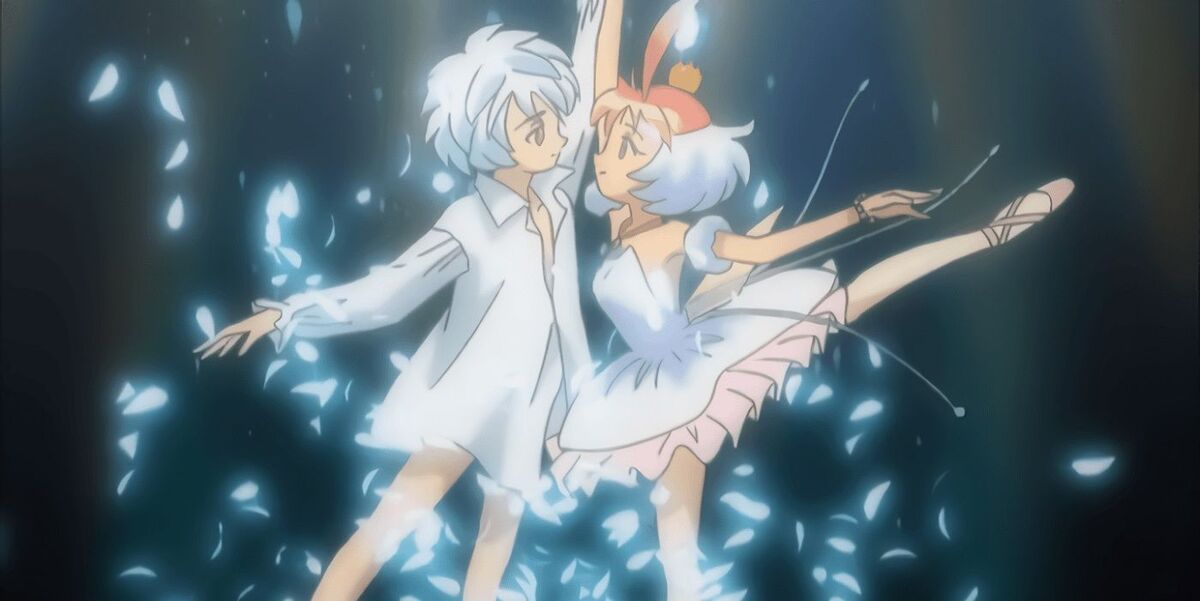
Inspired by ballet and fairy tales, Princess Tutu is the story of Ahiru, a young girl who magically turns into a duck whenever she gets embarrassed and falls in love with a mysterious, lonely boy named Mytho. As a result of her desire to help Mytho, Ahiru receives a magical pendant that allows her to transform into the mythical ballerina Princess Tutu. When she learns that Mytho is missing pieces of his heart, she resolves to collect them to save him and help him remember his true self.
Both Utena and Princess Tutu share a strong influence from fairy tales, either specific ones or character archetypes. For Utena, the anime series and animated film feature the character archetypes of princes, princesses, and witches, and intertwine all three in a story within a story that is revealed as the series progresses. Although certain characters appear to embody only one specific archetype, it is shown that they both embody and subvert different ones. For instance, Utena aspires to be a prince but also has a part of her that wants to be protected like a princess.
When it comes to Princess Tutu, the characters and overall series draw from a variety of fairy tales. There are nods to classic stories such as Swan Lake and The Nutcracker, with Princess Tutu representing Swan Lake’s Odette and the series antagonist sharing a namesake with The Nutcracker’s antagonist. There is also the fact that Princess Tutu and Utena both use fairy tales to interrogate the roles that people are expected to play and whether or not it is possible to break free from them.

This manga-faithful anime series is a remake of the original ‘90s Sailor Moon series, and centers around Usagi Tsukino, a 14-year-old girl who becomes a magical warrior. While walking to school one day, she meets a black cat named Luna who gives her the transformation item to become Sailor Moon. As Sailor Moon, Usagi must defeat alien monsters invading the earth, gather her fellow Sailor Soldiers, and find the moon princess.
Alongside Utena, Sailor Moon was one of the first modern magical girl anime to feature LGBTQ characters… in its original Japanese version, that is. The ‘90s English dub would infamously censor these characters; they wouldn’t receive proper English adaptation until the Sailor Moon Crystal anime, as well as the 2019 redubbing of the original ‘90s anime. This makes Sailor Moon Crystal’s characters significant, especially in the series’ third season.
In fact, the opening and ending credits of Sailor Moon Crystal season three have strong parallels with Utena’s opening. Utena’s opening features Utena and Anthy lying opposite each other. Anthy gives Utena a white rose and they both transform. In Sailor Moon Crystal’s season three opening, the female characters Chibiusa and Hotaru lay opposite each other with their hands touching and their bodies framed by roses, implying romantic feelings. The ending credits take a similar approach for the characters Sailor Neptune and Sailor Uranus, who are a lesbian couple. They are shown lying opposite each other in a bed of roses and cupping each others’ faces.
–

Twenty-five years after the series first premiered, Revolutionary Girl Utena has lived up to its name in more ways than one. Not only have Utena and Anthy inspired other compelling female characters like Fate and Cocona, but the anime’s motifs and action can be found in anime like Princess Tutu and Revue Starlight. Revolutionary Girl Utena truly revolutionized what psychological anime, shoujo anime, and magical girl anime could be; hopefully, its influence will be felt for many more years to come.
Related New
Related